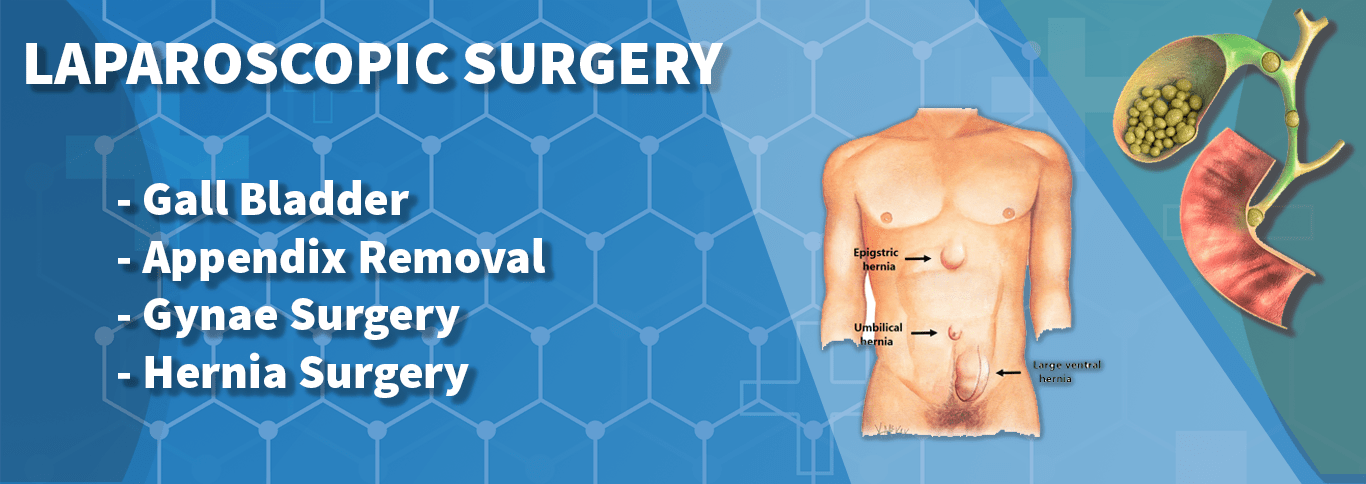
Laparoscopic Surgery
The gallbladder is a pear-shaped organ that stores a digestive fluid called the bile. If the gallbladder stops functioning efficiently, hard fragments are formed called gallstones. These stones can grow from being as small as a grain of sand to as big as that of a golf ball in extreme cases.
Gallstones do not go away on their own; in certain instances, the doctor may suggest surgically removing the gallbladder. This procedure is called a cholecystectomy.
Why Is Cholecystectomy Done?
Cholecystectomy surgery is recommended when a patient experiences the following symptoms:
- Pancreatic inflammation due to gallstones
- Cholelithiasis - Gallstones in the gallbladder
- Choledocholithiasis - Gallstones in the bile duct
- Cholecystitis - Gallbladder inflammation
Treatment for an inguinal hernia
You can have open surgery with a cut in the groin or Keyhole (Laparoscopic) surgery. If you are having open surgery you can have a general anesthetic, regional anesthetic, or local anesthetic depending on your fitness and preference. An incision is made in the groin. The hernia sac is identified. The sac is opened, emptied, and excised. The hernia is repaired with a non-absorbent mesh and the skin is then closed with absorbable stitches. The surgery takes about 30 minutes.
Keyhole surgery is done under General anesthetic. You will have 3 small incisions in the abdomen which will be 0.5cm to 1cm in length. The sac will be reduced into the abdominal cavity The hernia is repaired with a non-absorbent mesh and the skin is then closed with absorbable stitches. If you have hernias in both groins both can be fixed with the same skin incisions and at the same time. The surgery takes about 30 to 40 minutes and about an hour for two sides.
